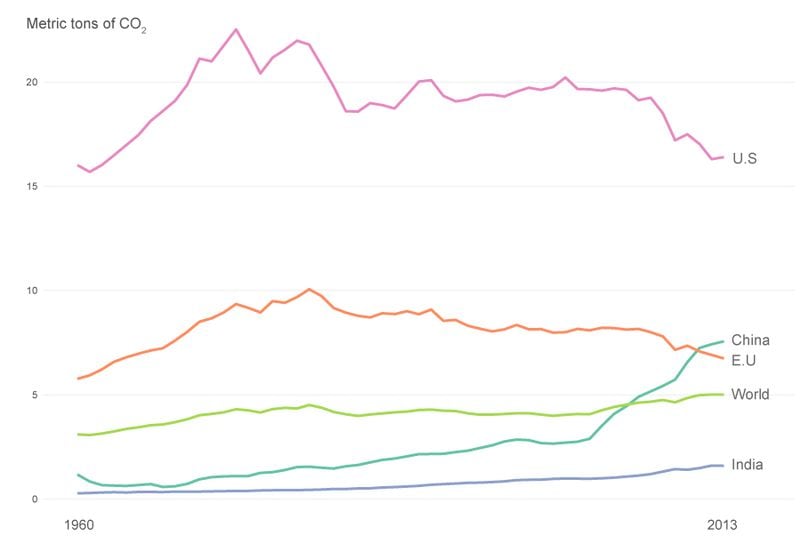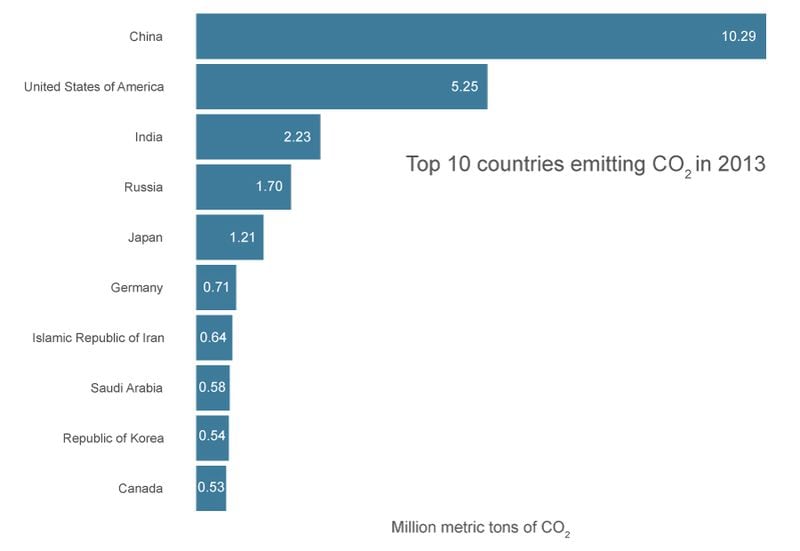President Trump announced Thursday that the U.S. would withdraw from the Paris agreement and "immediately cease all implementation" of the standards established in the 2015 accord.
Trump complained that the deal allowed China to increase emissions and "do whatever they want" for 13 years, and India to double its coal production by 2020. However, the fact remains that the U.S. has more emissions of CO2 per capita than any other country in the world.
According to data from the Carbon Dioxide Information Analysis Center, the U.S. emitted 16.3 metric tons per capita of CO2 in 2013, three times that of the world's emissions per capita. The U.S. accounts for a mere four percent of the world's population.
The entire European Union emitted 6.73 metric tons -- less than half of U.S. emissions. China, with four times as many people as the United States, still ended up with less than half the emissions of the U.S. India produces one-tenth of the amount of greenhouses gases released by the U.S.
Even if population is not taken into account, the U.S. is the second-largest polluter in the world, emitting 5.25 million kilotons of CO2, right behind China’s 10.25 million kilotons. India comes in third at 2.23 million kilotons.
Secretary of State Rex Tillerson insisted that the U.S. would continue to reduce greenhouse gas emissions despite walking away from the accord.
The good news is that U.S. emissions have been decreasing since the turn of the century. From 20.2 metric tons in 2000, the country was down to 16.38 metric tons in 2013, the last year available in the data.
Note: Emissions include CO2 emissions from burning fossil fuels, cement manufacture and gas flaring. The data is available both with the World Bank and the Carbon Dioxide Information Analysis Center.
About the Author








